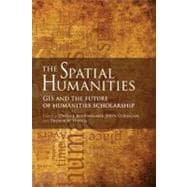
What is included with this book?
David Bodenhamer is Executive Director, the Polis Center, Professor of History, and Adjunct Professor of Informatics, Indiana University Purdue University Indianapolis.
John Corrigan is Edwin Scott Gaustad Professor of Religion and History and Chairperson of the Department of Religion at Florida State University.
Trevor M. Harris is Eberly Professor of Geography and Chair of the Department of Geology and Geography at West Virginia University.
| Introduction | p. vii |
| Turning toward Place, Space, and Time | p. 1 |
| The Potential of Spatial Humanities | p. 14 |
| Geographic Information Science and Spatial Analysis for the Humanities | p. 31 |
| Exploiting Time and Space: A Challenge for GIS in the Digital Humanities | p. 58 |
| Qualitative GIS and Emergent Semantic | p. 76 |
| Representations of Space and Place in the Humanities | p. 89 |
| Mappiong Text | p. 109 |
| The Geospatial Semantic Web, Pareto GIS, and the Humanities | p. 124 |
| GIS, e-Science, and the Humanities Grid | p. 143 |
| Challenges for the Spatial Humanities: Toward a Research Agenda | p. 167 |
| Suggestions for Further Reading | p. 177 |
| List of Contributors | p. 191 |
| Index | p. 195 |
| Table of Contents provided by Ingram. All Rights Reserved. |
The New copy of this book will include any supplemental materials advertised. Please check the title of the book to determine if it should include any access cards, study guides, lab manuals, CDs, etc.
The Used, Rental and eBook copies of this book are not guaranteed to include any supplemental materials. Typically, only the book itself is included. This is true even if the title states it includes any access cards, study guides, lab manuals, CDs, etc.